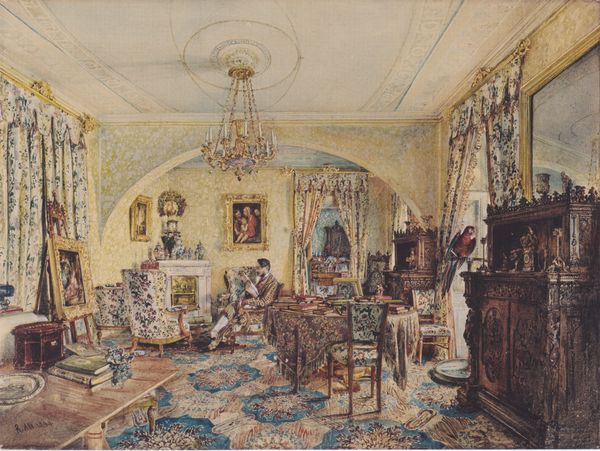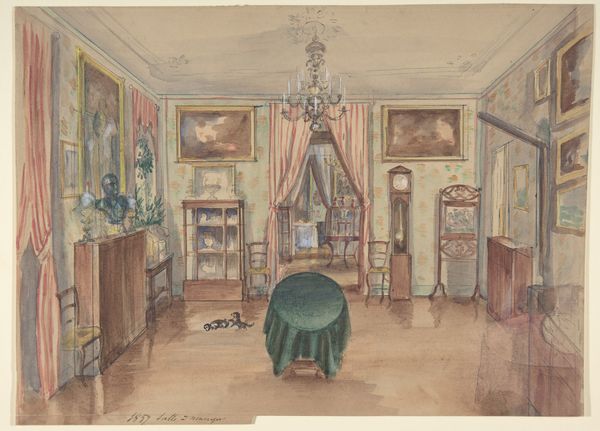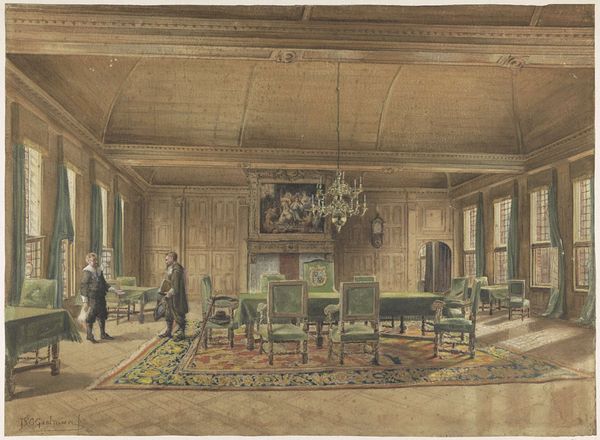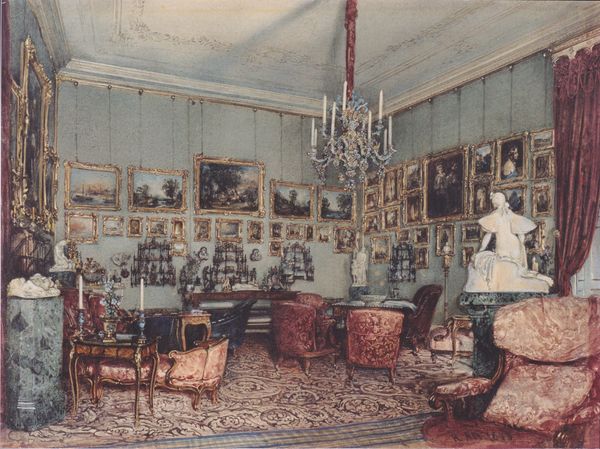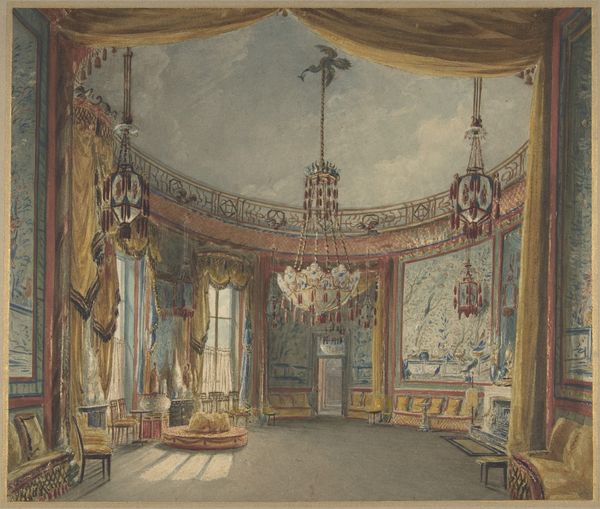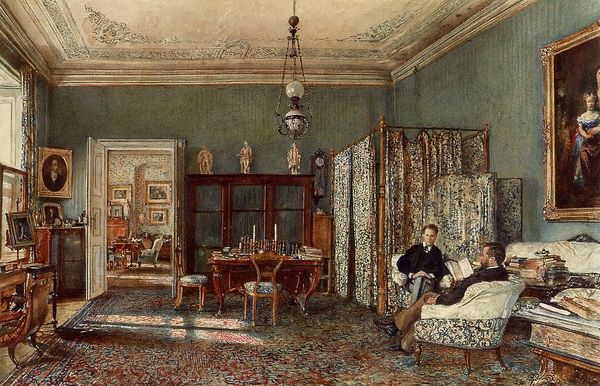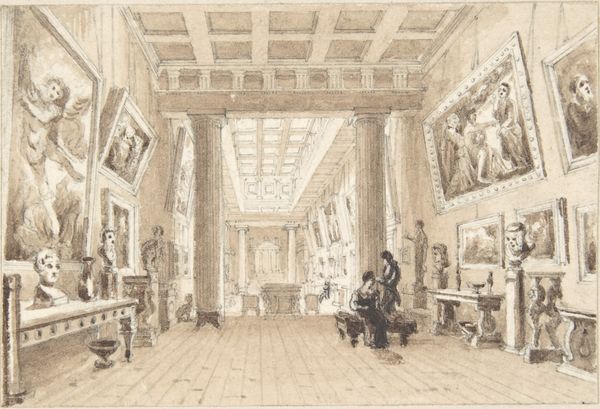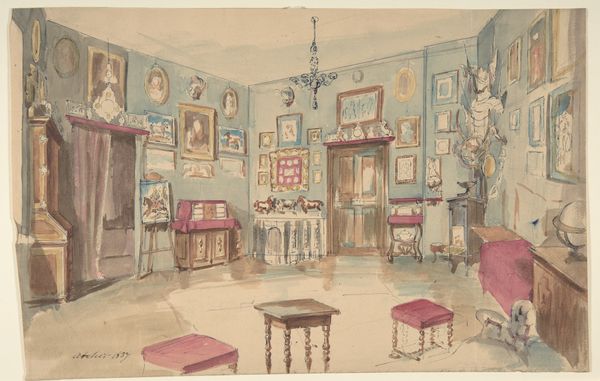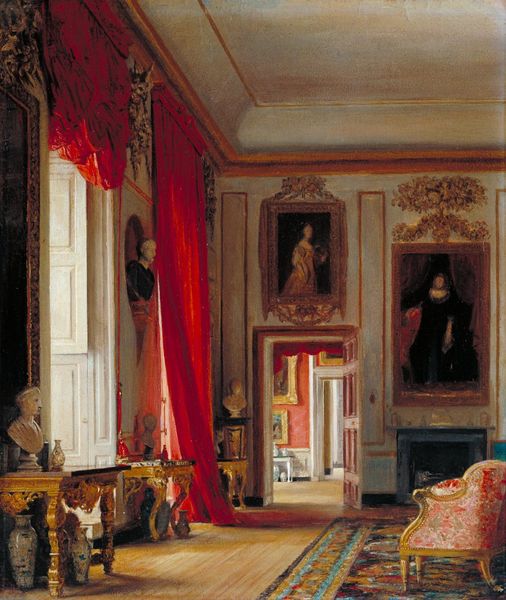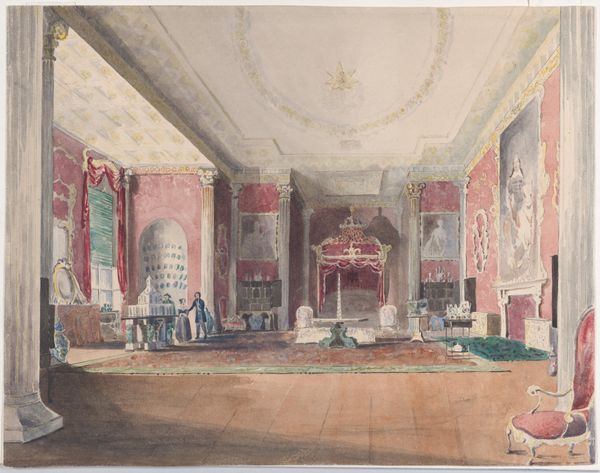
#
architectural modelling rendering
#
light earthy tone
#
architectural photography
#
traditional architecture
#
oil painting
#
earthy colours
#
earthy tone
#
watercolor
#
warm toned green
#
architectural design photography
Copyright: Public domain
Editor: This watercolour by William Henry Hunt from 1823 is titled "The Green Drawing Room of the Earl of Essex at Cassiobury". It’s such a beautifully rendered interior; the light filtering through the window onto the woman at the piano creates a real sense of atmosphere. What do you see in this piece, beyond the immediate visual charm? Curator: Well, I see a carefully constructed image of aristocratic life, intended for a specific audience. Think about the context: Cassiobury House, now demolished, was a grand estate. This watercolour isn’t just a record of a room, it’s a statement about power, taste, and lineage. Editor: So, the painting itself performs a social function? Curator: Exactly. It visualizes the Earl's social standing. The very act of commissioning such a detailed interior view, intended for display or dissemination, reinforced that. Who might have been the audience for such an image? Was it for other aristocrats, as a kind of aspirational 'house portrait'? Or perhaps for a wider public, to project an image of refined taste and social stability? Editor: That’s interesting, I hadn’t considered that the choice of subject matter—the green drawing room—contributes to the statement the Earl is trying to make. Curator: Precisely! And notice how Hunt meticulously depicts the ornamentation, the paintings on the walls, the porcelain. Each item reflects specific tastes and collecting practices which further build our sense of place. Editor: The way you frame the painting as a piece of social history makes it more engaging. I can see how it's not just documentation of a space, but also the documentation of the culture in the upper classes in the 1800s. Curator: It is important to note that art is very rarely "just" about the artistic merit of a piece; it's often about the conditions that enable an image's production and circulation. We might consider not only the work itself, but also who commissioned it, why, and what impact it had on viewers. Editor: That's a really helpful perspective. It's made me think differently about how we view historical art. Thanks.
Comments
No comments
Be the first to comment and join the conversation on the ultimate creative platform.
